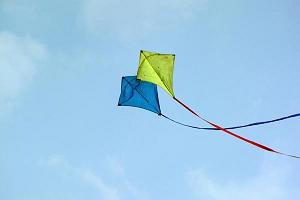Section 1 - Introduction and Resources
2A.1.1 Overview
 We have dealt with our variables and their values directly up to this point. We declare a float object x, and then store the value 2.5 into it. We declare a string object name, then store "Donald" into it. There is an indirect way to deal with data in C++ and, as you can imagine, it is both trickier and more commonly used. Why programmers always select the "trickier" way to do things is a bit of a mystery. Maybe, like the alchemists of the middle ages, they want to keep their dark art secret to limit the members of the exclusive club.
We have dealt with our variables and their values directly up to this point. We declare a float object x, and then store the value 2.5 into it. We declare a string object name, then store "Donald" into it. There is an indirect way to deal with data in C++ and, as you can imagine, it is both trickier and more commonly used. Why programmers always select the "trickier" way to do things is a bit of a mystery. Maybe, like the alchemists of the middle ages, they want to keep their dark art secret to limit the members of the exclusive club.
You are about to gain membership into the fellowship of programmers by learning the pervasive concept of pointers in C++.
In the second lesson we review sorting and recursion, both introduced in your prior course, and apply them jointly to binary search, AKA divide-and-conquer, strategies.
2A.1.2 Assigned Reading
As usual, read the week's modules and paste every code sample into your IDE. Then run it, make changes, re-run it, and so on, until you understand what's going on.
Read the modules and try the example code before looking at the assignment.
After reading the modules, look up any new terms in your textbook index, and see what it has to say about these things.
Additional Module Readings
Don't forget to check the class schedule in page 2 of your syllabus to see what extra handout modules you have this week. I recommend re-reading last week's handouts, especially:
- Syllabus - Review sections on course rules and assignment rules until you feel you understand them well.
- Resource 1R and 2R - Read a little deeper each week, paying close attention to those rules that apply to this week's material.
2A.1.3 String Resources
These are more advanced than you need at this point but they do contain material lacking in the text and this might be helpful to you if you want to learn more than I have supplied in my lectures. Reading these references is not required.
- http://www.fredosaurus.com/notes-cpp/strings/header-string.html
- http://yolinux.com/TUTORIALS/LinuxTutorialC++StringClass.html
- http://www.cprogramming.com/tutorial/lesson9.html
- http://www.cppreference.com/
2A.1.4 Resources for the Entire Course
Once again, I will remind you about optional resources:
- The Elements of C++ Style listed in the syllabus.
- General C++ Language Reference: http://www.cplusplus.com/doc/tutorial/